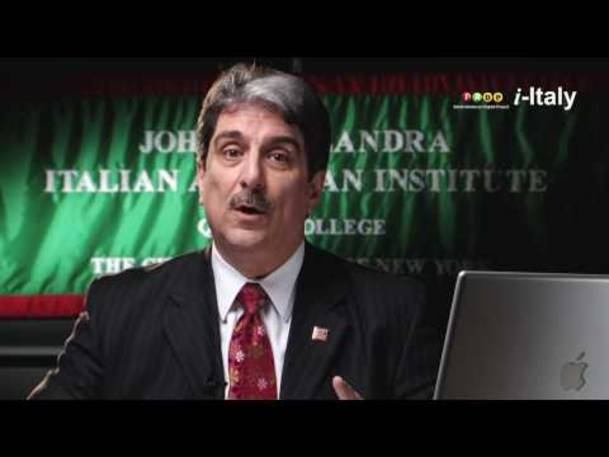


from the "Preface"
In his previous publication, Italici (2008), Bassetti lays out his philosophy of italicità (Italianicity). In that book, we come to understand that “the Italic is a member of the vast network, or global aggregation, based on morals shared by a civilization,” that the “’Italico is a Post-Italian, a citizen of the world with a new identity. An identity that, based on regional origins more than national, flows between culture and a renewed interest in regional and ethnic characters.” It is this recognition of a process, one that resonates ever so nicely with what we have seen
It is this recognition of a process, one that resonates ever so nicely with what we have seen
articulated before, here in the United States: that “ethnic identities constitute only a family of resemblances, that ethnicity cannot be reduced to identical sociological functions, that ethnicity is a process of inter-reference between two or more cultural traditions (my emphasis)” and, I would add, between two or more generations of the same ethnic/racial group (Fischer [1986] 195). This new way of looking at things in Italy, something already implied, I would submit, in the mountainous work of the intellectual work produced by the Giovanni Agnelli Foundation/ Centro Altreitalie [2], is now examined and underscored by this later intellectual generation that is represented by Piero Bassetti and his colleagues at Globus et Locus [3].
What Bassetti is, in fact, underscoring speaks directly to the concept that Italian and/or Italic identity is not based on some monolithic notion of what it means to be Italic, to use his term, which is surely the most adequate at this juncture in time. That while some may believe that this ethnic marker of the Italian/Italic may have its particularities with regard to a certain geo-cultural zone, the notion of Italicity cannot be “constructed as an internally coherent object of theoretical know ledge” and hence identity; that such a limited attempt at some sort of Italic categorization “cannot be resolved ... without an altogether positi vist reductionism.”
This insistence on the monolithic, in fact, is one of the greater challenges of the Italian/American community. Too many want to see Italian Americans as those cast from one mould—a fiction, for sure, as has been demonstrated by the more recent reaction to an intellectual presentation of a sub-culture of Italian America, which we can readily call the “guido” factor, where a series of reactions from the self-ascribed spokespeople cried foul and, in some cases, either denied the existence of this sub-culture or, in ignoring the original intent of the colloquium, used it as a platform to jockey for positioning within the so-called “Italian-American community.”
If Piero Bassetti’s notion of Italicity has any significance in this greater discourse of ethnicity—and I would submit that there are indeed many—it is precisely the non-monolithic base that is inherent in his concept of this “new form of shared and pluralistic experiences.” In the end, and as a global phenomenon, “Italicity is held together by a set of values, of traditions, of ‘ways’ of being, of looking at the world and dealing with it.” It is precisely these “’ways’ of being” that, once we dig deep enough, we might finally realize function also on a [g]local level. For as Italicity figures indeed as that “mixture of communities which will no longer aggregate on the basis of old territorial criteria of borders that are decided by the State-Nation but rather on connections that go beyond geographical limits,” so too on a local level we should recognize a “mixture of [identities that can] no longer [presume to] aggregate on the basis of old … criteria of borders that are decided by [the self-appointed few].” This is, to be sure, one of the most important lessons one can take away from Piero Bassetti’s Italic Lessons.
Bibliography
Italici: An Encounter with Piero Bassetti. Paolino Accolla and Niccolò d’Aquino, eds. (New York: Bordighera, 2008)
Michael M. J. Fischer, “Ethnicity and the Post-Modern Arts of Memory,” in Writing Culture. The Poetics and Politics of Ethnography. Edited by James Clifford and George E. Marcus (Berkeley; U of California P, 1986)
QUESTIONS? COMMENTS?
SEND THEM TO
letizia.airos@gmail.com
Source URL: http://newsite.iitaly.org/magazine/focus/art-culture/article/piero-bassettis-lezioni-italiche-send-us-your-questions
Links
[1] http://newsite.iitaly.org/files/food-thought-stuzzichini-piero-bassetti-niccolo-daquino
[2] http://www.fiatgroup.com/en-us/group/citizenship/cultura_societa/Pages/Fondazione.aspx
[3] http://www.e-italici.org
[4] http://www.bordigherapress.org